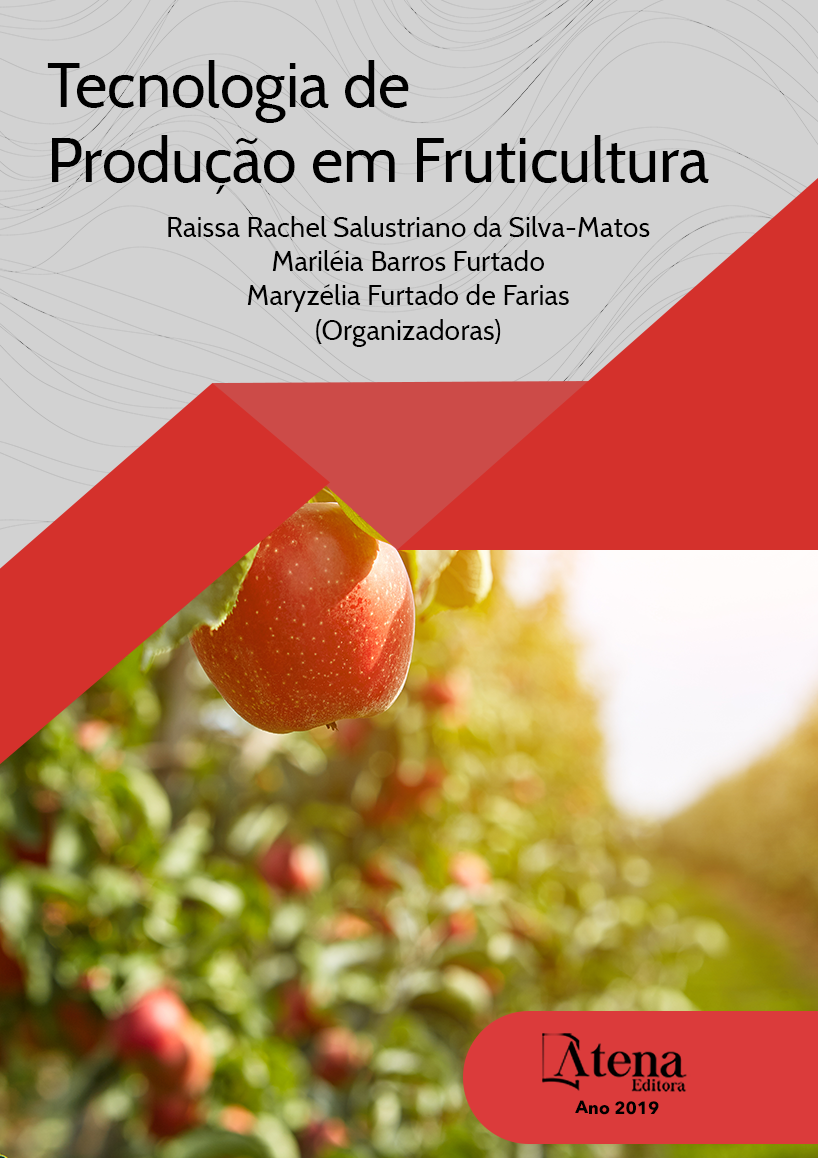
POTENCIAL ALELOPÁTICO DO EXTRATO AQUOSO DE BABAÇU NA GERMINAÇÃO E DESENVOLVIMENTO INICIAL DE SEMENTES DE MELÃO
O babaçu (Attalea speciosa) é uma
palmeira que possui grande relevância social e
econômica no Norte e em alguns estados do
Nordeste devido as suas qualidades nutricionais
e as diversas finalidades que possui, por isso
faz-se necessário investigar todas essas
possíveis utilidades, incluindo a cerca do
potencial alelopático que a mesma possui.
Desta forma, com este trabalho objetivou-se
avaliar o potencial alelopático de extratos do
caule decomposto de babaçu na germinação
e desenvolvimento inicisl de sementes de
melão. O experimento foi conduzido no Centro de Ciências Agrárias e Ambientais (CCAA) da
Universidade Federal do Maranhão (UFMA),
localizado no município de Chapadinha/MA. Foi
adotado delineamento inteiramente casualizado
com cinco tratamentos e quatro repetições. As
concentrações do extrato de babaçu foram
obtidas pela retirada de material vegetal do
caule de babaçu, que foi triturado e filtrado,
obtendo-se assim as concentrações de extrato
de caule de babaçu (ECB): T1: 0 g L-1 ECB; T2:
5 g L-1 ECB; T3: 10 g L-1 ECB; T4: 25 g L-1 ECB;
T5: 50 g L-1, sendo T1 a testemunha apenas com
água destilada. As sementes utilizadas foram
as do melão amarelo (Cucumis melo L.) onde
foram submetidas as diferentes concentrações
de ECB, enroladas em folhas de papel filtro e
colocadas em condições controlada através
de câmara climatizadora. Para avaliação dos
tratamentos foram avaliados a porcentagem
de germinação (G%), índice de velocidade de
germinação (IVG), comprimento da parte aérea
(CPA) e comprimento do sistema radicular
(CR). Os dados foram submetidos à análise
de variância pelo teste “F”, para diagnóstico de
efeito significativo, e os tratamentos comparados
entre si pelo teste Tukey a 5% de probabilidade.
O tratamento T5 (50 g L-1) induziu maior G%
das sementes de melão, já o IVG apresentou
diferença estatística entre os tratamentos T1
e T5. proporcionou maior desenvolvimento
tanto do comprimento da parte aérea como do sistema radicular. Assim conclui-se que os extratos em todas as concentrações
testadas, não influenciam de forma significativa a germinação das sementes de melão,
porém produz efeito positivo sobre o índice de velocidade de emergência.
POTENCIAL ALELOPÁTICO DO EXTRATO AQUOSO DE BABAÇU NA GERMINAÇÃO E DESENVOLVIMENTO INICIAL DE SEMENTES DE MELÃO
-
DOI: 10.22533/at.ed.0311909102
-
Palavras-chave: Cucumis melo L., Attalea speciosa, alelopatia
-
Keywords: Cucumis melo L., Attalea speciosa, allelopathy
-
Abstract:
The babaçu (Attalea speciosa) is a palm tree that has great social and
economic relevance in the North and in some Northeastern states due to its nutritional
qualities and the different purposes that it has, so it is necessary to investigate all these
possible utilities, including about the allelopathic potential that it possesses. In this way,
the objective of this work was to evaluate the allelopathic potential of extracts of the
babaçu decomposing stem in the germination and inicisl development of melon seeds.
The experiment was conducted at the Agricultural and Environmental Sciences Center
(CCAA) of the Federal University of Maranhão (UFMA), located in the municipality
of Chapadinha / MA. A completely randomized design with five treatments and four
replications was adopted. The concentrations of the babassu extract were obtained by
the removal of plant material from the babassu stem, which was crushed and filtered,
obtaining the concentrations of babassu stem extract (ECB): T1: 0 g L-1 ECB; T2: 5 g L-1
ECB; T3: 10 g L-1 ECB; T4: 25 g L-1 ECB; T5: 50 g L-1, with T1 being the control only with
distilled water. The seeds used were the yellow melon (Cucumis melo L.), where the
different concentrations of ECB were collected, rolled in sheets of filter paper and placed
under controlled conditions through an air-conditioning chamber. The percentage of
germination (G%), germination speed index (IVG), shoot length (CPA) and root system
length (CR) were evaluated. The data were submitted to analysis of variance by the “F”
test, for a diagnosis of significant effect, and the treatments compared to each other by
the Tukey test at 5% probability. The T5 treatment (50 g L-1) induced higher G% of the
melon seeds, whereas the IVG presented a statistical difference between T1 and T5
treatments. provided greater development of both shoot length and root system length.
Thus, it was concluded that the extracts at all tested concentrations do not significantly
influence the germination of melon seeds, but it has a positive effect on the rate of
emergence.
-
Número de páginas: 15
- Lídia Ferreira Moraes
- Ramón Yuri Ferreira Pereira
- Edson Dias de Oliveira Neto
- Hosana Aguiar Freitas de Andrade
- Analya Roberta Fernandes Oliveira
- Marileia Barros Furtado
- Naélia da Silva de Moura
- Raissa Rachel Salustriano da Silva-Matos
- Raissa Rachel Salustriano da Silva Matos


